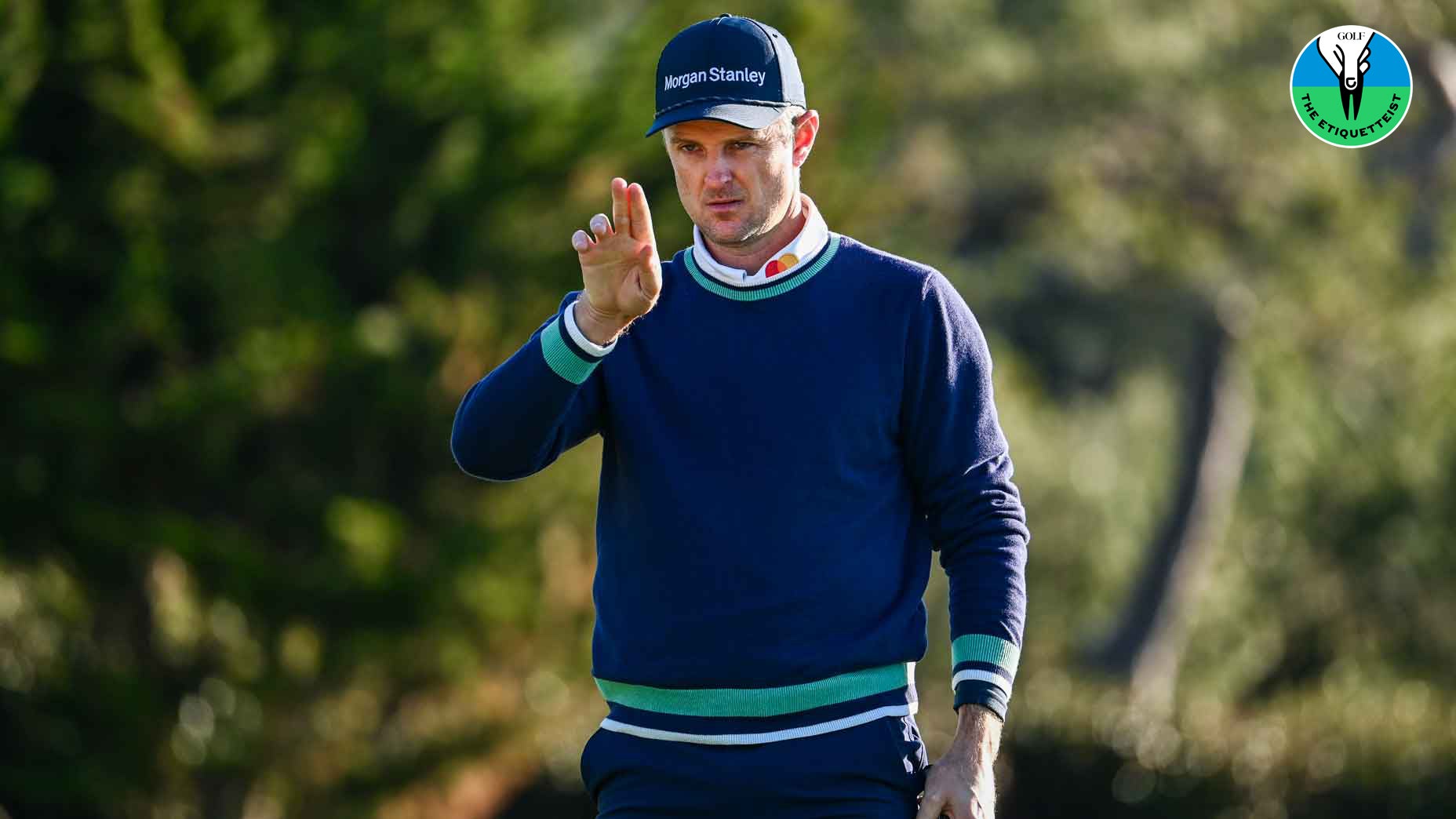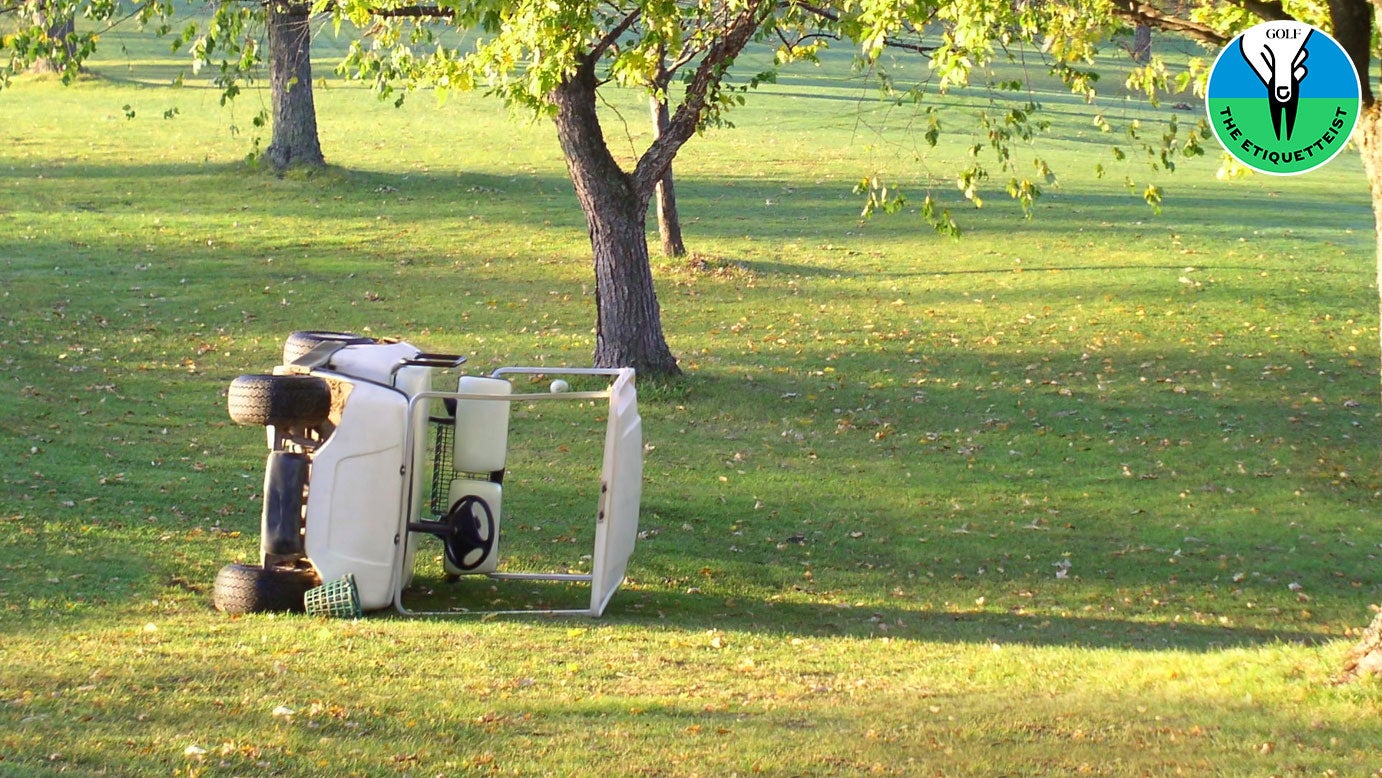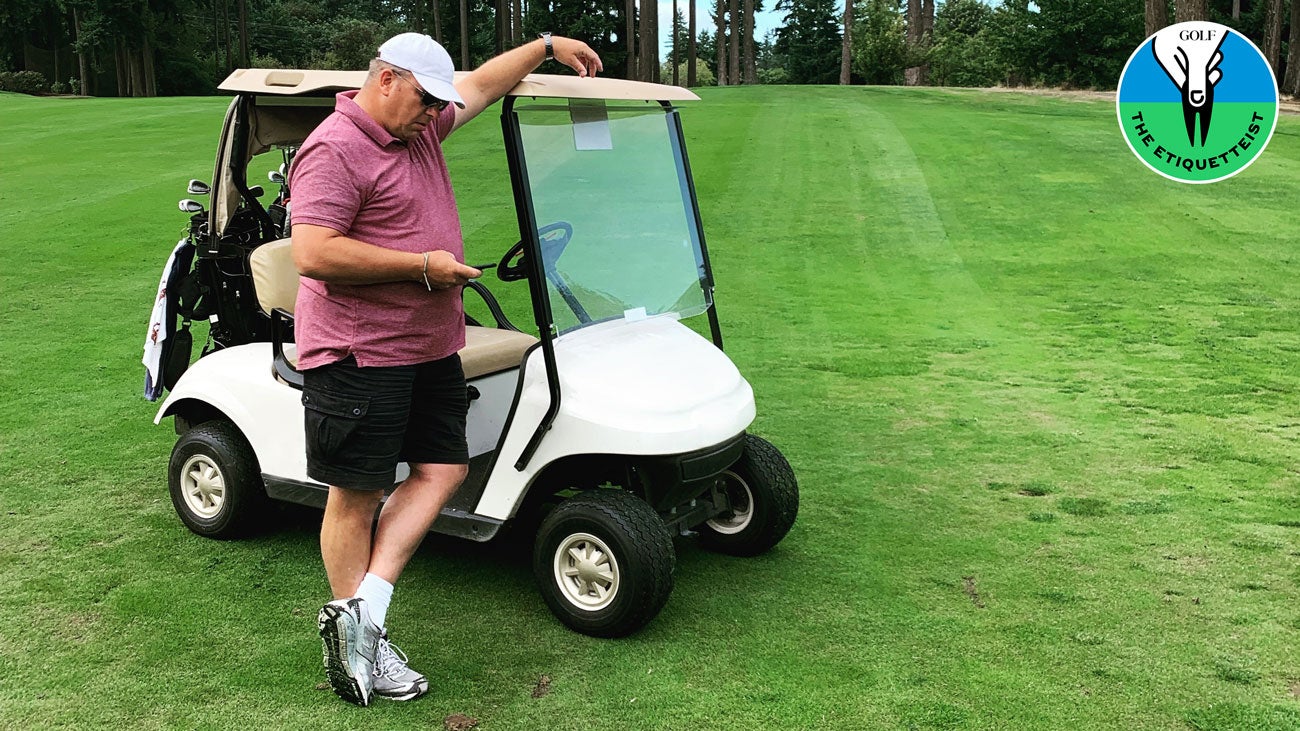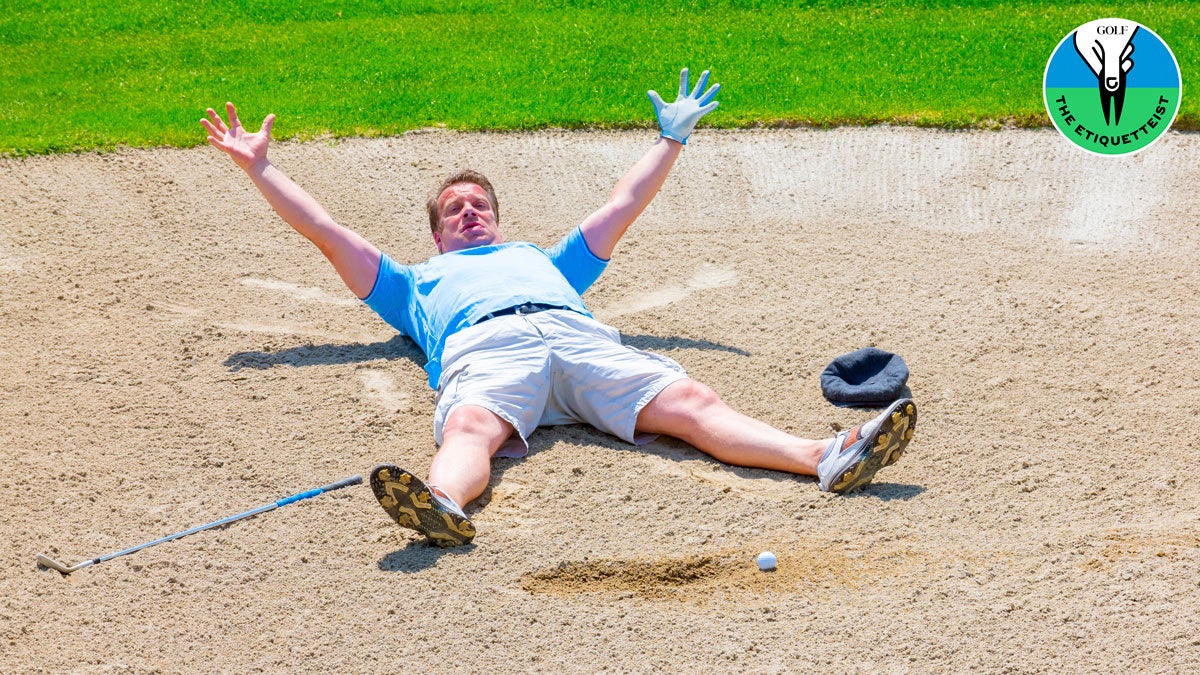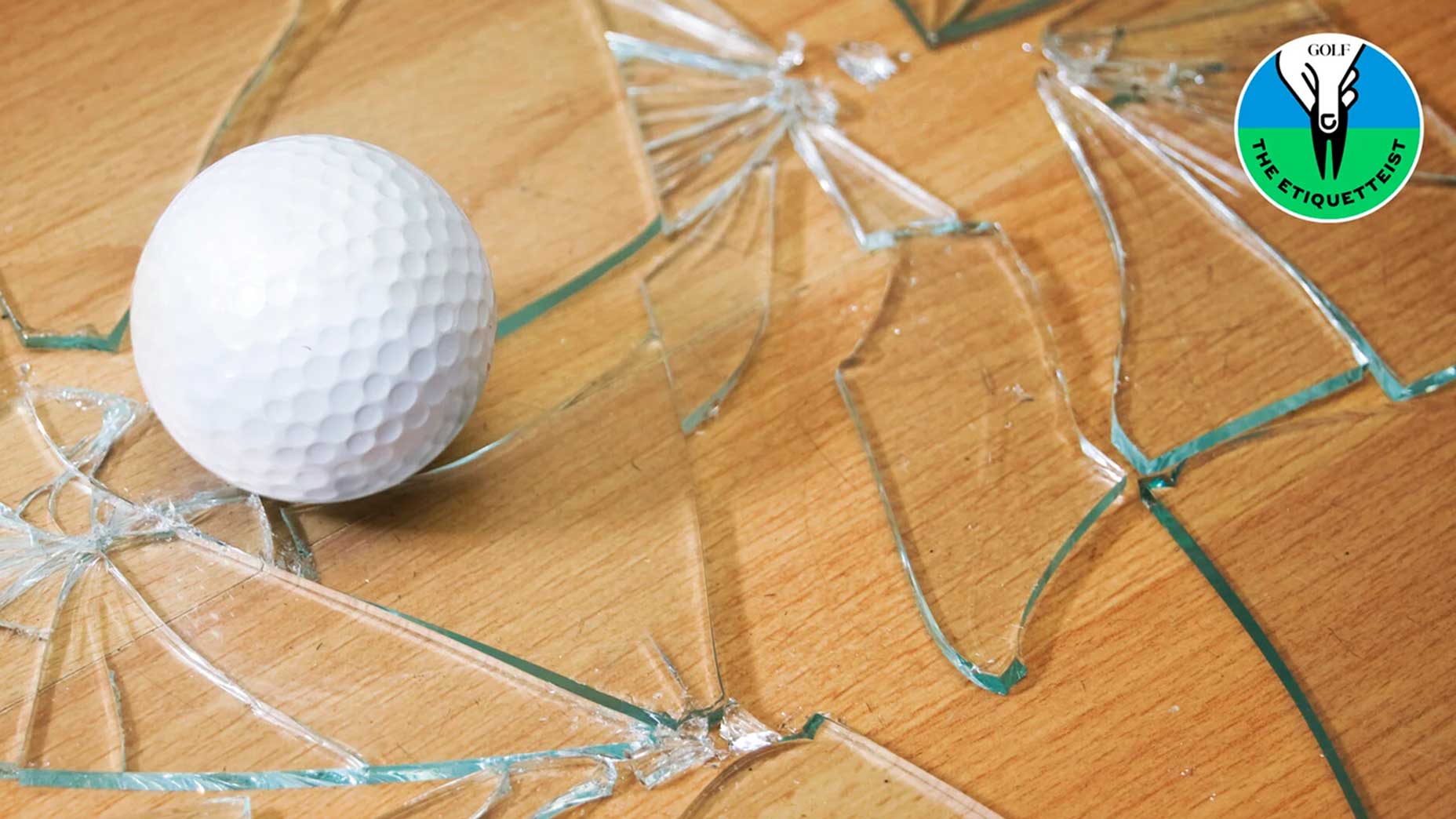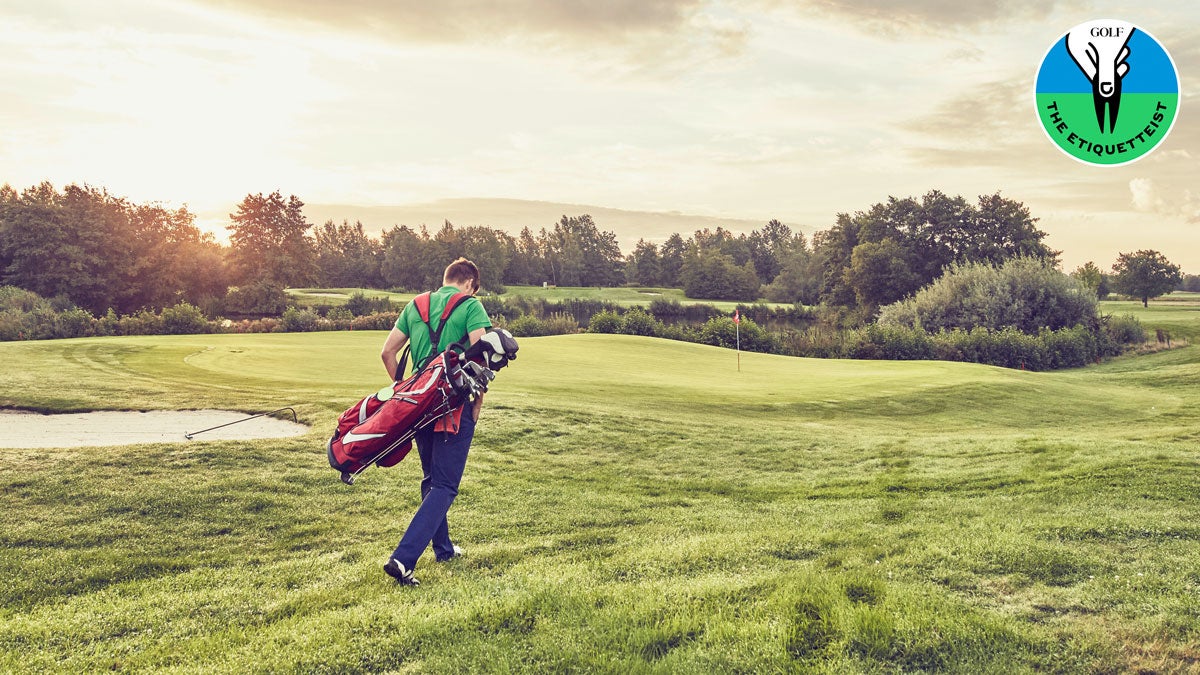On a blind shot with a group ahead, how long should you wait before hitting?

The hilly 1st fairway at Elie, in Scotland, creates a blind opening tee shot.
Alan Bastable
Mike from Washington writes:
I belong to a wonderful gem of a nine-hole course that is very hilly and deceptively hard. One of the holes is a par-5 that goes up a hill and then slopes downhill steeply and blindly. A large fir tree has a bell to ring at about 270 yards to signal the ‘all clear.’ But the bell is close to the clubhouse, so every so often a group will head in without ringing the bell. Others just forget. Quite annoying as you sit on the box waiting, and it’s a 300-yard roundtrip to walk up and check the hole below. My question: On blind tee shots, big doglegs and downhill slopes, how long should you wait? Should you always drive or walk up and look?
Dear Mike,
Don’t ask for whom the bell tolls, especially if no one rings it. People will think you’re crazy.
You’re not nuts to be annoyed by the lack of ringing, though. That’s irksome. It’s also a reminder of the limitations of audible signals. Bells are charming, and they play a role on blinds shots at some of the world’s finest courses (the 16th at Old MacDonald and the 14th at North Berwick are two of many examples that come to mind). Trouble is, they’re subject to user error; or rather, user forgetfulness. What’s more, on blustery links, with the sounds of wind (and maybe waves) echoing in your ears, the tolling of a bell can be hard to hear.
In an ideal world, more courses would employ failsafe visual aids, like the periscope on the first tee at Elie. (The 18th tee at Riviera used to have a scope as well, so you could smack your drive without worrying about killing Larry David, or whichever big name was up ahead.)
But the Etiquetteist recognizes that putting periscopes (or high-angled mirrors) everywhere is not a realistic solution.
And so, to your question: What to do?
One way to go is to lean on your experience and intuition. If the blind shot comes toward the middle or end of the round, you’ll likely have been on the course for long enough to have a sense of how the group ahead of you is moving. Are they slowpokes? Sprinters? Somewhere in between?
Using your internal clock, you can probably get a sense of what qualifies as a reasonable amount of time for them to get out of the way. The Etiquetteist has relied on this method before, and it has yet to fail him. Wait until you think enough time has passed, and then count to 10 or 20, as an additional cushion.
You should be good to go.
But that’s the thing. Should be good isn’t good enough.
Just as no one wants to get hit by a ball, no one wants to be the golfer who beans someone else. That’s dangerous to the point of being potentially deadly.
When push comes to slice, it’s on you to be 100 percent certain that the coast is clear. And when other means fail, the only way to do that is to have a look-see. If you’re in a cart, that’s easy. Driving up and back won’t take much time. Walking, of course, requires more effort. But you don’t have much choice, other than to lay up well short of your target.
An imperfect solution? No doubt. But golf has never been a game of perfect. Just because they forgot to ring the bell doesn’t mean you have the right to risk ringing theirs.



